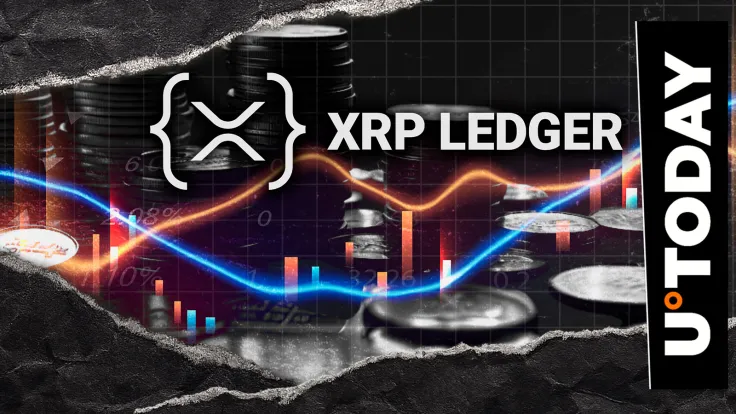Coinbase CLO to Treasury: modernize AML with AI and blockchain
On Oct. 20, 2025, Paul Grewal, Coinbase’s chief legal officer, took to X to urge the U.S. government to fight cryptocurrency-related crimes using blockchain. “When bad guys innovate in financial crime, good guys need innovation to keep pace,” said Grewal. He shared an open letter he penned on behalf of Coinbase, providing the government with recommendations on approaching crypto crime.
- The letter is a response to the U.S. Treasury’s request for comment on “innovative methods to detect illicit activity involving digital assets.”
- In a series of posts accompanying the open letter, Grewal outlined several policymaking directions aimed at enhancing AML practices through AI, zero-knowledge proofs, etc.
- The letter itself proposes to amend the Bank Secrecy Act and set a number of guidelines aimed at modernizing identity verification rules.
- It is not the first time that Grewal has given recommendations to the USG on how to treat the burgeoning crypto sector. In 2024-2025, Grewal was calling out Operation Choke Point 2.0, a practice halted by the Trump Administration in 2025.
Grewal’s message
Paul Grewal released the letter to the U.S. Treasury on Oct. 17. He shared the link to it on Oct. 20, concluding an X thread. In X posts, Grewal gave the U.S. Treasury four recommendations. He urged the U.S. government to:
- Facilitate responsible use of AI to improve AML compliance by companies under the Bank Secrecy Act. It includes transaction monitoring and suspicious activity reporting. Regulations should focus on governance and outcomes and move away from the one-size-fits-all model.
- Create guidance that will define the way API-driven AML compliance technologies will be regulated. The guidance should include acceptable use cases, data privacy requirements, and interoperability standards.
- Amend the Bank Secrecy Act to use zero-knowledge proofs and decentralized identification as part of customer identification practices.
- Create guidance that would explicitly recognize and incentivize the use of blockchain-based methods for analysis as a more effective AML compliance tool.
In an introduction to these recommendations, Grewal emphasized that “good guys” (U.S. Treasury and Congress) should be as innovative as “bad guys” and can follow Grewal’s recommendations to “underscore [the] reality.”
What’s in the Coinbase letter?
In a 40-page letter, Grewal thanked the U.S. Treasury for the opportunity to propose some solutions for fighting crime associated with digital assets.
In an executive summary, Grewal noted that Treasury’s request for comments came when money-laundering schemes had become very sophisticated. Advanced technologies allow criminal transactions to move at high speed and in large volumes.
To fight this, Grewal proposed using blockchain and other innovative solutions to detect illicit activity and modernize the Anti-Money Laundering Act of 2020 and the Bank Secrecy Act. Modernization entails deleting redundant and outdated provisions.
The letter gives recommendations on each of the Treasury requests’ topics.
Regarding the use of Application Programming Interfaces (APIs), Grewal wrote that the Treasury should facilitate the adoption of APIs through regulation. This would help financial institutions use them to maintain AML/CFT norms. The Treasury needs to issue guidance under the Bank Secrecy Act. APIs will allow institutions to get data from various blockchains and analytics platforms in a timely manner. API regulation should address problems such as lack of standardization and data quality issues.
Another topic is the use of artificial intelligence. According to Grewal, the Treasury should adopt responsible use of AI in AML compliance. He believes it will revolutionize the way law enforcement and institutions fight illicit activity. He believes AI will reduce false positives, enable real-time processing at scale, and free up resources needed for higher-risk activity.
As for digital identification, Grewal advocated for updating guidelines to ensure decentralized identification and zero-knowledge proofs are included in the approved identity verification process (“specifically through amending Financial Crimes Enforcement Network regulations or issuing guidance that authorizes these forms of digital identification as an acceptable form of non-documentary verification”). The new guidance should allow interoperability of identity ecosystems and reuse of identification data. Grewal emphasized that the existing Bank Secrecy Act’s customer identification policy is outdated and dangerous. Grewal recommends allowing some forms of non-documentary verification.
In the Blockchain Technology section, Grewal called on the Treasury to explicitly recognize and incentivize the use of on-chain data, as it would improve AML/CFT compliance practices. It will require amending the Bank Secrecy Act. Grewal stressed that facilitating blockchain AML compliance via native technologies will make compliance more accurate, efficient, and protective of user data.
The rest of the letter is dedicated to answering specific questions from the Treasury’s “Request for comment on innovative methods to detect illicit activity involving digital assets.” It outlines risks, inefficiencies in the current rules, and other specific problems.
Earlier, Paul Grewal was a prominent figure in shedding light on Operation Choke Point 2.0, an effort by FinCEN to force banks to deny services for clients using cryptocurrency. Grewal used FOIA to acquire documents containing evidence of such actions. Eventually, Operation Choke Point 2.0 was halted under the Trump Administration.
You May Also Like

American Bitcoin’s $5B Nasdaq Debut Puts Trump-Backed Miner in Crypto Spotlight

XRPL Validator Reveals Why He Just Vetoed New Amendment

